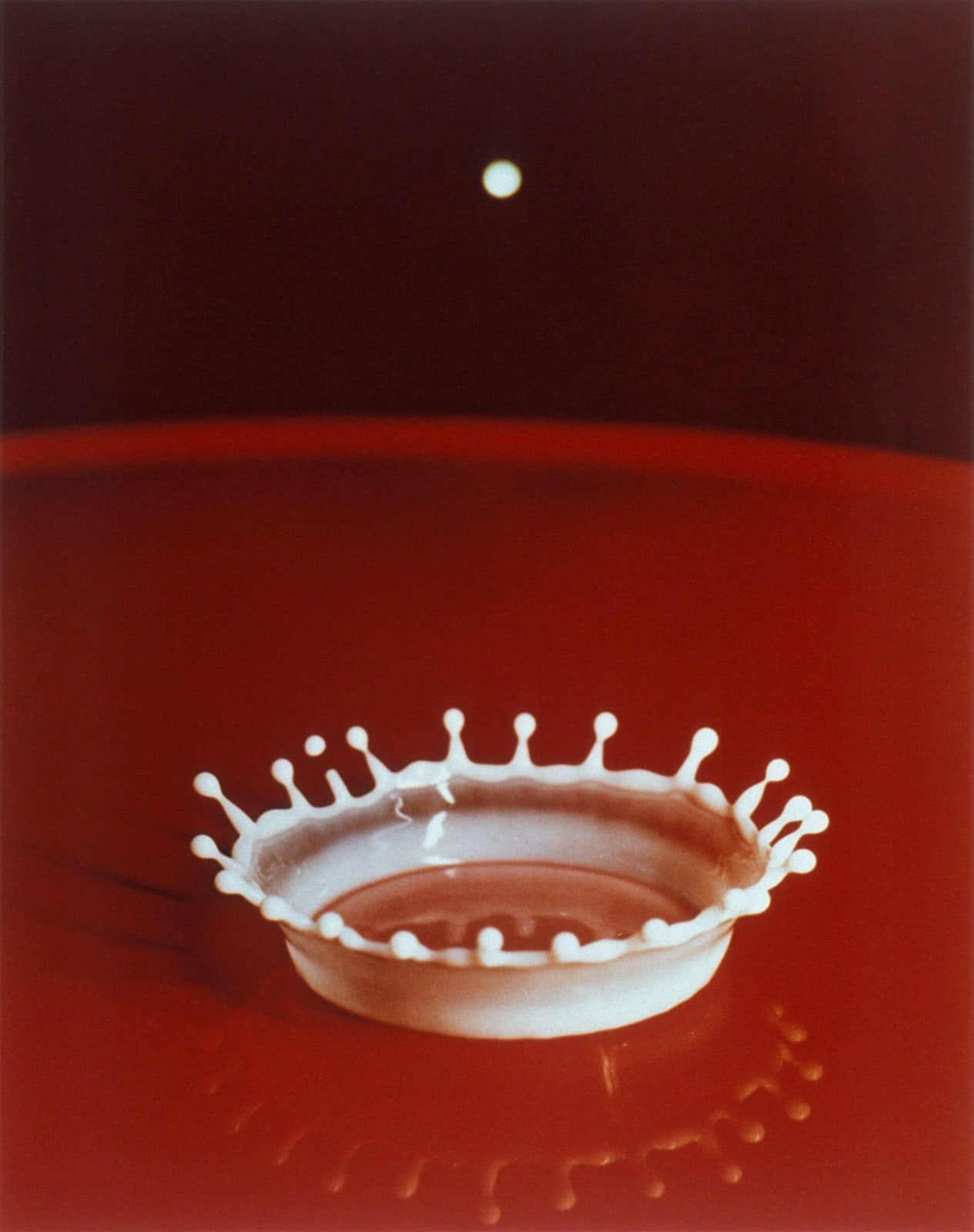
Harold Edgerton American, 1903-1990
Printed by Gus Kufayas in 1977 under the supervision of the artist.
.
Paper: 40.8 × 33.34 cm / 16 1/16 × 13 1/8
Frame: 45 x 38 cm / 17 3/4 x 15 in
.
Milk Drop Coronet is a groundbreaking high-speed photograph taken by American scientist Harold "Doc" Edgerton on January 10, 1957. The image captures the precise moment a drop of milk falls onto the surface of a red pan, creating a splash that forms a crown-like, or "coronet," shape. This photograph is celebrated both for its scientific innovation and its striking visual beauty.
Edgerton, a professor of electrical engineering at MIT, pioneered the use of stroboscopic photography to freeze moments that are invisible to the naked eye.
For Milk Drop Coronet, he used a camera connected to a beam of light and xenon flash tubes. When a drop of milk obstructed the light beam, it triggered the camera and flash after a precisely timed electronic delay, capturing the instant the splash formed.
Edgerton began experimenting with photographing milk drops as early as 1932, and produced a similar black-and-white image in 1936. However, the 1957 Milk Drop Coronet stands out for its clarity, color, and perfect timing. The image not only illustrates the physics of liquid surface tension and splash dynamics but also demonstrates the potential of photography to reveal phenomena beyond human perception.
Edgerton's work with high-speed photography, especially his development of the electronic flash, transformed both scientific research and popular culture. His images—ranging from bullets in flight to hummingbirds—made the invisible world of rapid motion accessible and mesmerizing to the public.
Milk Drop Coronet has been widely exhibited and is considered one of the most important photographs of the 20th century. It has been included in Time magazine's list of the "100 Most Influential Images of All Time," and praised by critics for its uncanny beauty and scientific value. The original negative was destroyed, but prints reside in major museums, including the Art Institute of Chicago, the MIT Museum, and the Denver Art Museum.